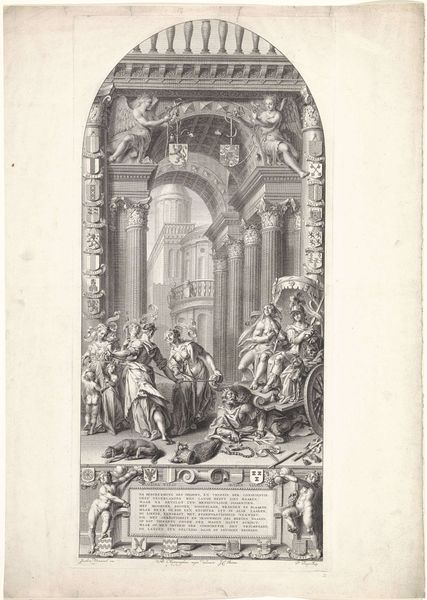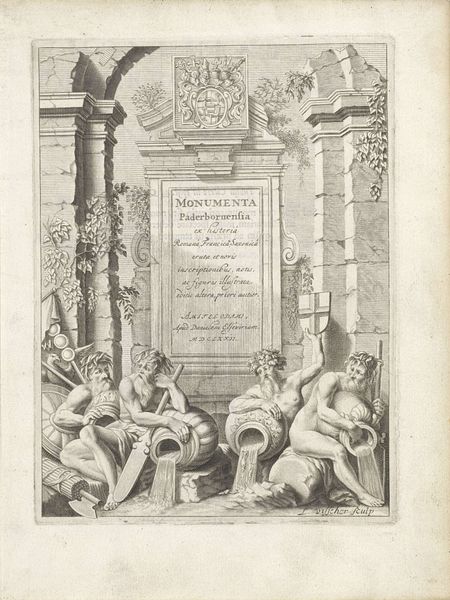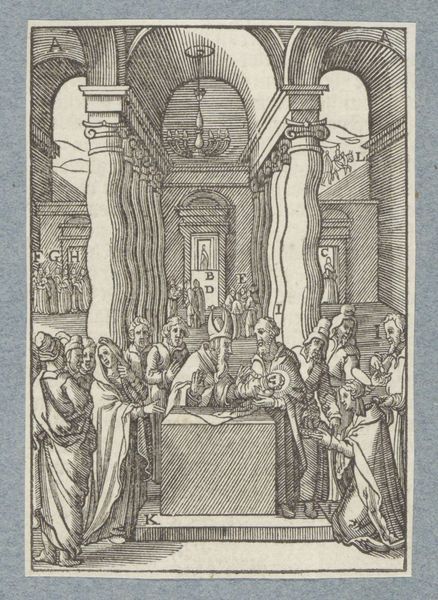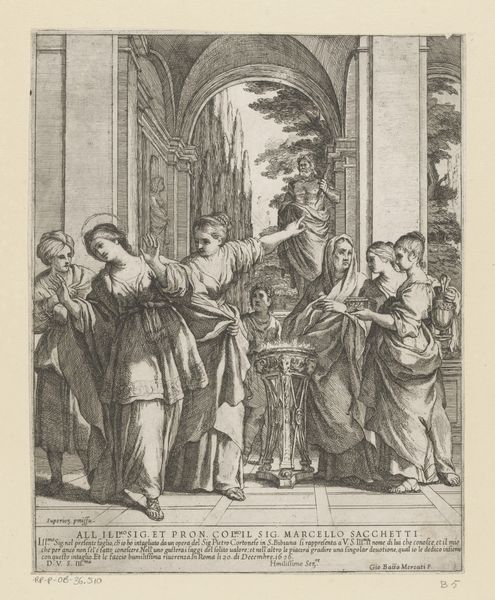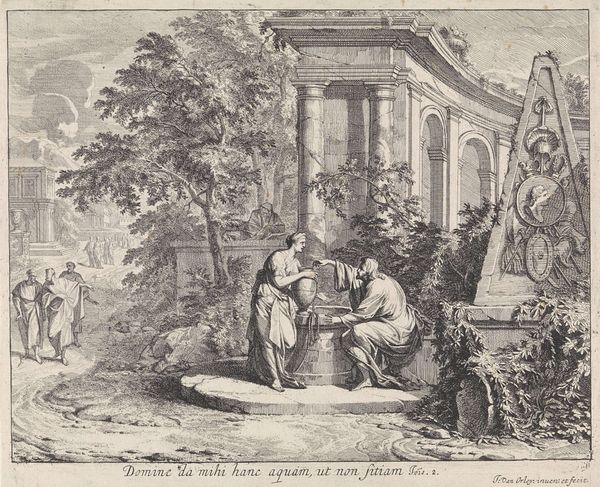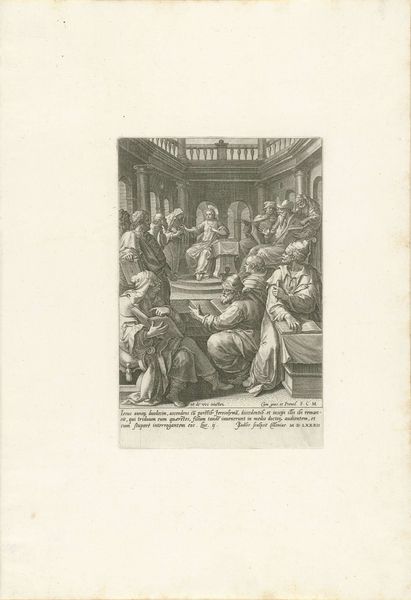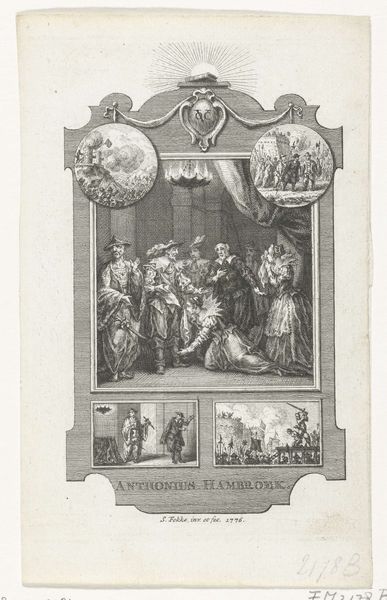
print, engraving
#
baroque
# print
#
history-painting
#
engraving
Dimensions: height 156 mm, width 86 mm
Copyright: Rijks Museum: Open Domain
Editor: Here we have Jacobus Schijnvoet's 1713 engraving, "Figures Bring Offerings to a Burning Altar," housed at the Rijksmuseum. It feels very controlled, with precise lines detailing the scene. What strikes you about this piece? Curator: I'm drawn to the physical act of its creation. An engraving like this requires immense labor, careful tooling of the metal plate, and multiple impressions to circulate the image. We must consider the social context, that the production and distribution of these prints contributed to the visual culture of the Baroque era. How would a wide distribution alter the impact of such scenes? Editor: So you're suggesting that its value isn't solely in the image depicted, but also in its accessibility and the labour involved in its making? Curator: Precisely! Think about the consumption of these prints. They weren't just aesthetic objects; they were commodities produced within a specific economic system. They played a vital role in disseminating ideas and values among different audiences. Who would have commissioned this? Was it for scholarly or decorative purposes? Editor: I didn’t consider that the multiple stages to create this. Is it trying to bridge fine art with printed production for mass consumption? Curator: Indeed, it challenges traditional boundaries. The engraving imitates a history painting, a typically high art form. Yet, by translating it into a reproducible print, it democratizes access and consumption, inviting broader participation in interpreting its historical or allegorical subject. This interplay between imitation, labor, and distribution is central to its meaning. Do you think its success relies on these copies circulating around Amsterdam at the time, or can it survive through just one original today? Editor: I'm starting to see it less as a window into a historical scene and more as a product of its time. Thinking about the labor, materials, and consumption definitely shifts my understanding of Baroque art. Curator: It becomes a material trace of a cultural moment, revealing the intricate relationship between art, society, and economics. Hopefully visitors appreciate this today!
Comments
No comments
Be the first to comment and join the conversation on the ultimate creative platform.

